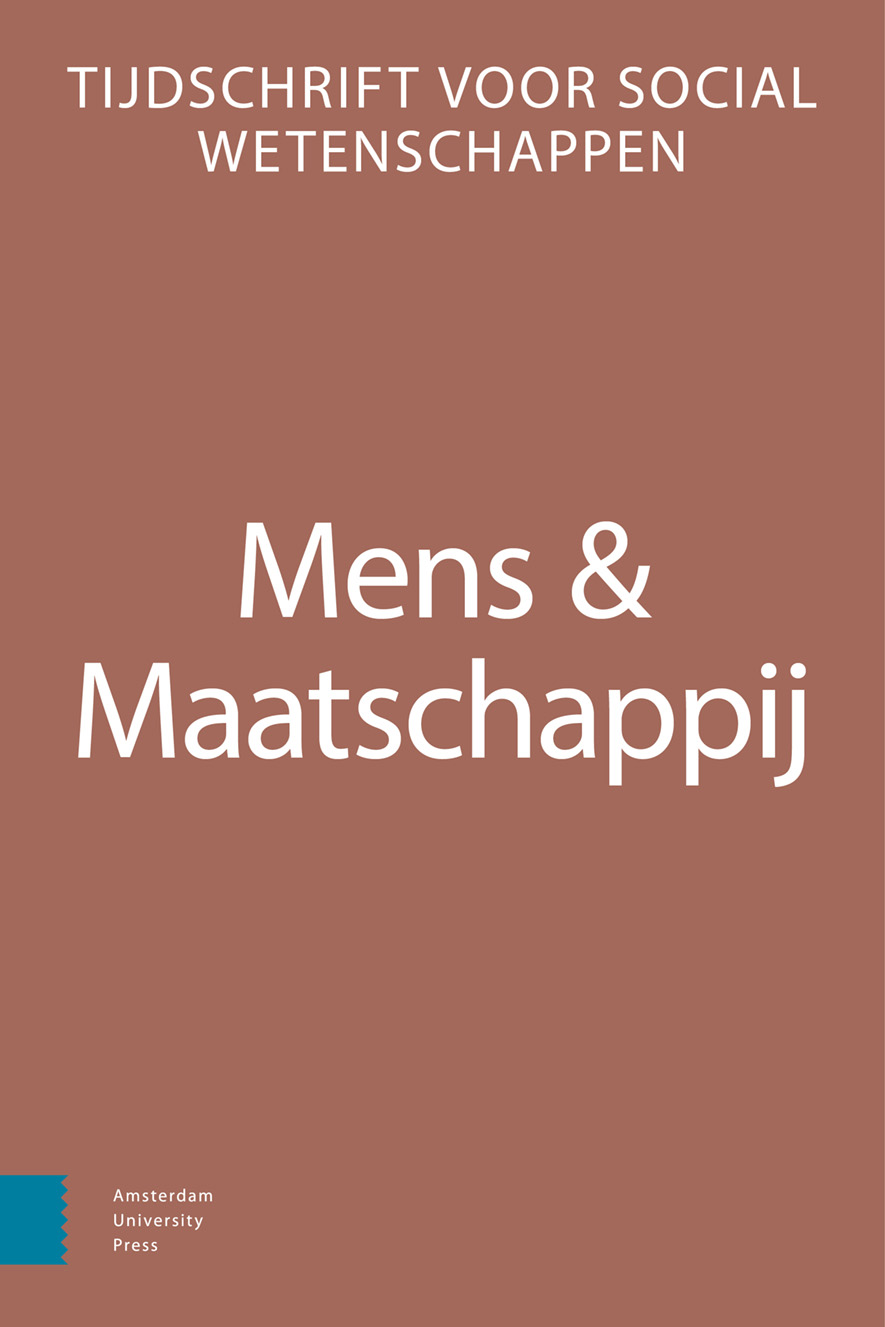- Home
- A-Z Publications
- Mens & Maatschappij
- Previous Issues
- Volume 91, Issue 2, 2016
Mens & Maatschappij - Volume 91, Issue 2, 2016
Volume 91, Issue 2, 2016
-
-
Vriendschappen tussen jong en oud in 25 Europese landen
More LessAuthors: Pearl A. Dykstra & Maria FleischmannSummaryCross-age friendships in 25 European countries
This paper focuses on individual and country-level circumstances shaping friendships between young and old to gain insight into conditions for intergenerational solidarity. Using European Social Survey data, findings show that relatively few people have cross-age friendships (18% of the young and 31% of the old). As predicted by the ‘meeting principle’, individuals who operate in settings where there are opportunities for meaningful interactions with people belonging to a different age group are more likely to have cross-age friendships. As predicted by the ‘disposition principle’, individuals with more favourable feelings about other age groups are more likely to have cross-age friendships. Neither the Active Ageing Index nor macro-level trust and individualism show significant associations with the likelihood of having cross-age friendships. Apparently, conditions that bring generations together are meeting opportunities at the local level, underscoring the importance of decentralized initiatives aimed at increased contact and co-operation across age groups.
-
-
-
Doding gevolgd door zelfdoding in Nederland
More LessAuthors: Marieke Liem & Natascha van KeekenSummaryHomicide followed by suicide in the Netherlands
Homicide followed by the suicide of the perpetrator often leads to shock and incomprehension. It has been suggested that media reporting on such cases could lead to an imitation effect. This article describes the nature and incidence of homicide-suicide in the Netherlands in the period 1992-2014. In addition, it assesses whether a copycat-effect can be established due to media reporting. Results show that homicide-suicides occur on average nine times per year. Intimate partner homicide-suicide and child homicide-suicide are the most frequent types of homicide-suicide. Even though several temporal clusters could be observed during the period of study, there are insufficient indications to confirm a copycat-effect. This may be attributed to the heterogeneous and multifaceted nature of this phenomenon, lacking one single potentially ‘contagious’ cause.
-
-
-
Indicatoren voor sociale cohesie
More LessAuthor: Pepijn van HouwelingenAbstractIndicators for social cohesion. Japan as a special case and its implications.
How to measure social cohesion? There are, in the literature, two main methods for measuring social cohesion: one can measure trust or one can measure civic participation in different kinds of groups. It will be argued that both methods appear to suffer from two biases. First, universal forms of social cohesion are prioritized. Second, in general, perceptions are measured instead of actual behaviour. These two biases are not without consequences, especially with regard to comparative research. Using Japan as an example it is shown that these biases indeed exist and that the use of other indicators would result in quite different outcomes.
-
Volumes & issues
Most Read This Month


